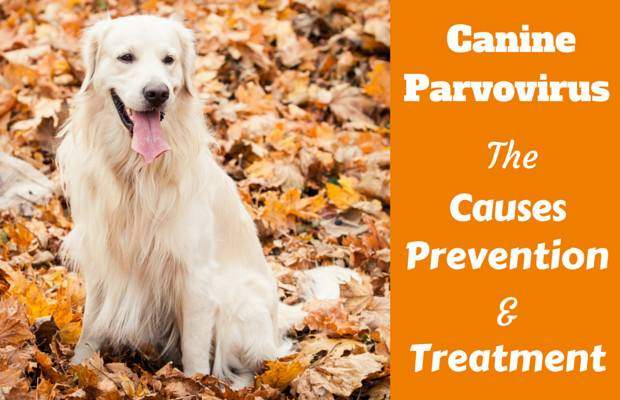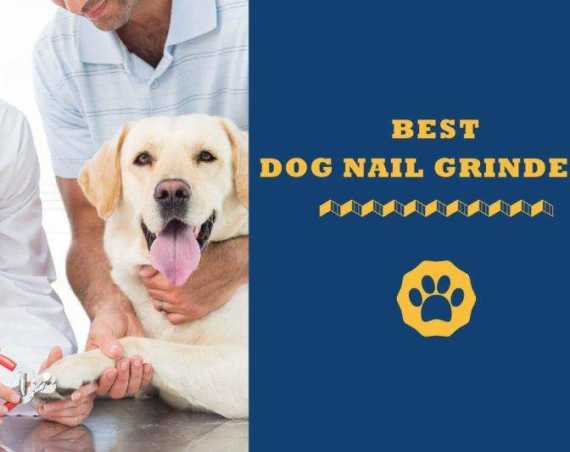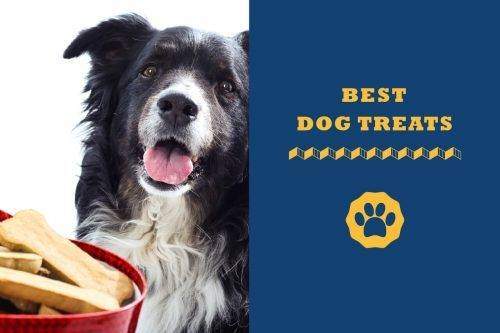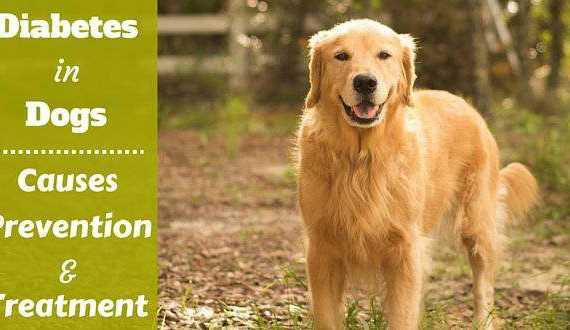Updated: August 9th, 2022

Photo Credit: © Depositphotos.com / alkiona25
Cast your mind back to the year 1978, if you can.
Many new things debuted that year, some of which are still with us today; cell phones, GPS, and the ‘Garfield’ comic strip were all first seen in 1978.
Unfortunately, so was Canine Parvovirus, CPV2.
What Is Parvovirus?
The Canine strain of parvovirus – CPV2 stands for Canine Parvovirus 2 – is a viral disease, and one that is extremely contagious. Ironically, CPV2 may be a mutation of a virus found in cats, feline panleukopenia.
There are two forms of parvo in dogs: cardiac, and intestinal.
Cardiac Parvovirus
A rare form of the disease, cardiac parvo occurs in young puppies infected in the womb, or shortly after birth. The virus attacks the puppy’s heart muscles, and the condition is usually fatal.
Intestinal Parvovirus
The more common of the two forms (and the focus of this article), intestinal parvo is contracted through ingestion of the virus.
The virus then spreads to the bloodstream via the throat and goes on to attack dividing cells in the lymph nodes, bone marrow, and intestines. Left unchecked, this attack will allow bacteria from the intestines to invade the bloodstream.
Symptoms of Parvovirus in Dogs
According to VetStreet, the main symptoms of parvo are:
- Vomiting
- Loss of appetite
- Diarrhea (sometimes bloody)
- Lethargy
- Weight loss
- Fever
Any dog displaying some or all of these signs should be taken to a veterinarian as soon as possible.
Symptoms won’t show for at least 3 days, and may not manifest themselves until as late as 10 days after infection, which leaves little time for treatment.
Transmission and Causes of Parvovirus
Parvovirus lies in wait for its next host in the most unappealing of locations – poop. Infected dogs deposit the virus along with their stool.
The most common route into the body is through ingestion (accidental, or otherwise) of stool containing the virus, or through sniffing infected feces. The virus can also be transmitted directly to your Golden from an infected dog.
Frustratingly, parvovirus can be carried around by just about anything it comes in contact with. This includes other animals, people, and inanimate objects. Parvo is remarkably hardy, and has been known to survive for many months on shoes, floors, clothes, dog food dishes – all things your dog is likely to come in contact with!
As you might imagine, in urban areas where dogs are plentiful, parvovirus can spread rapidly throughout the local population.
Interestingly, parvovirus seems to affect all canines, domestic or otherwise. For that reason, if you live in the country you need to be wary of your Golden contracting the disease from the droppings of foxes, coyotes, and wolves.
There are even indications that racoons may carry the disease, though they aren’t severely affected by it.
On the bright side, while we humans can give the virus a ride, we cannot catch the disease.
Diagnosing Parvovirus
If your vet suspects your Golden has contracted parvo, he or she will likely perform an Enzyme Linked ImmunoSorbant Assay test, (commonly known as ‘ELISA’).
ELISA is a quick test of 15 minutes or so, that detects parvovirus in a stool sample.
Blood and urine tests may also be performed, as well as x-rays and/or ultrasounds to check for obstructions and swelling.
Are Golden Retrievers Especially Susceptible to Parvovirus?
While some breeds of dog seem to be more prone to contracting parvo than others, (such as Labrador Retrievers, German Shepherds, and Rottweilers), Golden Retrievers are not one of them.
However, they are still at risk, as is any and every breed of dog.
Preventing Parvovirus
Now that you know where parvo comes from and how dangerous it is, naturally you’ll want to do whatever it takes to keep your dog safe! What follows are the steps you should take to prevent your pooch ever contracting parvovirus.
Parvovirus Vaccine
Now it’s time for the good news: you can easily protect your dog from Parvo simply by having them vaccinated and then keeping them up to date.
The importance of parvo vaccine cannot be over-stressed. With a mortality rate as high as 90% in untreated dogs, vaccinating your dog is a no-brainer. This is especially true since CPV2 vaccine is often combined with vaccine for other serious conditions, including distemper.
The first dose of Parvo vaccine should be administered to a puppy between 6-8 weeks, followed by boosters every 4 weeks until the puppy is approximately 16-20 weeks old. One more booster is given when your dog reaches one year old.
If your older dog was not vaccinated as a puppy, it’s not too late! Talk to your vet about getting shots for your dog, and set up a schedule for re-vaccination down the road.
Cleaning Up An Infected Area
Should an infected dog come into your home or yard, you’ll need to do some thorough cleaning to prevent re-transmission of the disease. Removal of any feces left behind – handled with great care! – is a start, but you’ll need to do more than that.
As mentioned earlier, this resilient virus can hang on for months. Annoyingly, most household cleaners and disinfectants won’t be enough to get rid of it.
The simplest solution is to throw out anything the infected dog came in to contact with. But for items you’d rather not replace (water dishes, toys, and other hard objects), you can clean them with a solution of one part bleach to 32 parts water, or stronger. Soaking in this solution for about 10 minutes should be enough to eliminate the virus from the item.
Needless to say, this won’t work on soft or porous surfaces such as grass, fabric, carpet, or wood. Use as strong a disinfectant as you can find, or completely resurface the area, if possible. These may seem like extreme measures, but they’re necessary to combat this pesky virus.
Parvovirus Treatment
If your dog does contract parvo, don’t give up hope, for all is not necessarily lost. Even though the mortality rate is very high in untreated dogs, many infected dogs will survive with proper treatment.
There is no medicine available to defeat the disease directly, so treatment involves addressing the symptoms instead.
Hospitalization
A dog battling parvo will need to be hospitalized during treatment. Antibiotics will be administered, as well as drugs to combat nausea and vomiting, intravenous fluids to stave off dehydration, and special nutrition to bolster the immune system.
The average hospital stay for this intensive regimen is about 5-7 days. As you might imagine, this will not come cheaply.
Though you may be tempted to try treating your dog at home, the success rate for home remedies is very low. I highly recommend you make the necessary financial arrangements, and give your dog the best possible chance of survival.
To learn more about hospital treatment, watch this video about a successful fight against parvovirus:
After Treatment
Even after a successful treatment for parvovirus, your dog is not entirely out of the woods. Fighting the disease leaves the immune system weakened, which makes your dog susceptible to other diseases and infections. Eating a diet designed to reinforce the immune system will help return things to normal.
For at least two months after treatment, your dog will still be an infection risk for other dogs. So keep them isolated, and away from areas other dogs frequent.
Additionally, be a good neighbor and alert nearby dog owners to your situation so that they can have their own dogs tested. And clean your home thoroughly, as well as all your doggy gear: bowls, leashes, collars, toys, everything.
Final Thoughts
Parvovirus has proven to be an opportunistic and highly adaptive foe to the canine community. Fortunately, by simply vaccinating your dog, it doesn’t have to become a problem for you.
In fact, if every dog owner ensured their pets had all their shots, maybe parvo would be nothing but another scourge of the 70s we’ve gotten rid of, just like disco, bell-bottoms, and shag carpet!
Disclaimer
All content on TotallyGoldens.com is intended to be for informational and entertainment purposes only. It is not and must not be considered professional advice, and it must not be used as a substitute for seeking professional advice.
TotallyGoldens.com will accept no liability or responsibility for the use or misuse of what’s written on this site. Before taking any course of action with any medical, health related or behavioral issue, you MUST seek the advice of a veterinarian or other certified professional and not rely on and blindly follow the content found here.



